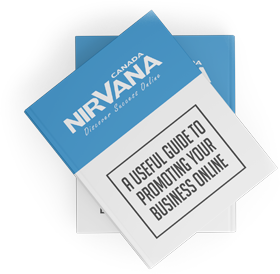Categories
- AngularJS Development
- Awards
- Business
- Canada Digital Adoption Program
- Content Marketing
- Digital Marketing
- Ecommerce Development
- Email Marketing
- Magento
- Microsoft 365
- Mobile App Development
- Mobile Optimization
- MongoDB
- Node.js
- Online Marketing
- Search Engine Optimization
- Shopify
- Social Media Marketing
- Web Development
- Website Design
- Website Maintenance
- WordPress Websites

Download Our Digital Marketing Ebook
Download Our Digital Marketing Ebook
Nowadays, it doesn’t make sense to drain time handling reservations or event RSVPs by hand when you can have a program do it for you instead. With WordPress, you can efficiently set up an event registration website where people can find all the information they need and sign up at any time.
Your needs may change, but the basic features any event registration website will need are:
• A calendar that displays the date of your event(s)
• Functionality that enables guests to sign up, register, RSVP, or potentially purchase tickets
• A way for users to receive updates and email confirmation regarding their sign-ups
• Database functionality, facilitating your site to keep track of registrations for you.
If you set it up right, an event registration website should be able to operate without much oversight. All you have to do is add new events as needed and check to see how many people have joined before each one. Of course, first, you’ll need to install the site itself.
Step 1: Installation
1. Login to your WordPress site.
2. Go to Plugins > Add New and search for Events Manager.
3. Install and activate the plugin.
There exist two versions of Event Manager: Free and Pro. You’ll need the Pro version if you want customized registration forms and fee gateways.
Step 2: Choose a Theme & Customizations
WordPress themes determine your site’s look and layout, and they come in all appearances and sizes. There are themes created for specific types of websites, and multipurpose themes that you can use for anything.
What’s most important is to pick a theme with the right style, and lots of customization choices so you can make your site unique.
Once you have selected your theme, you’ll need to customize your form. The essentials should include:
Name
Address
Phone
Mobile
Email
You can add new custom fields to your event registration form by dragging them from the left-hand panel to the right-hand panel. You can also customize the fields by clicking on them.
Step 3: Configure your event Registration Form.
SETTINGS:
Here you can configure the following:
• Form Name: Rename your form here.
• Form Description: Give your event a story.
• Submit Button Text: Customize the copy on the submit button.
• Spam Prevention: Enable the anti-spam honeypot feature to prevent spam registrations and keep your website safe.
• GDPR Improvements: You can disable the storing of entry information and user details, such as IP addresses and user agents.
NOTIFICATIONS:
Notifications are an excellent way to send an email whenever an application is submitted on your website. Unless you disable this feature, whenever someone submits an event registration form on your site, you’ll get a notification about it.
If you use smart tags, you can also send a notification to the site visitor when they list for your event, letting them know you received their registration and ticket acquisition and will be in contact shortly. This assures people their event enrollment has gone through properly.
CONFIRMATIONS:
Form confirmations are messages that display to site visitors once they submit an event registration form on your website. They let people know that their form has been processed and offers you the chance to let them know what the next steps are.
PAYMENT:
If you’re collecting payment from site visitors on your event registration form, you’ll need to configure your form’s payment settings, so payments process the correct way. WordPress Forms integrates with both PayPal and Stripe for receiving payments.
Step 4: Add Your Event Registration Form to Your Website
After you’ve set up an event registration form, you need to add it to your WordPress website. WordPress Forms allows you to add your forms to many sections on your site, including your blog posts, pages, and even sidebar widgets.
And there you have it!
With 4 easy steps, you now know how to build an online event registration form.

